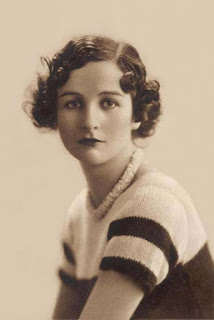
This blog seems to think I have only read this book three times. I am sure I have read it many more times than that, and indeed I hope to read it even more times. I really, really, really, love this one. And I believe it is one of those books, like I CAPTURE THE CASTLE (but much better) that inspires this kind of gnaw-your-own-arms-off devotion among some. Others, and I see on Goodreads this is a large majority of readers, give it just 4 out of 5 stars. This shows why democracy can’t work, why breaching the 2% on world climate is inevitable, and in general why we are all going to hell in a hand basket. What is wrong with everyone?
I suspect the key issues here are as follows: 1) Sexism: Read in the wrong way, you could think this was chick-lit 2) Classism: Mitford was rich, and I mean really unearned income, gross kind of rich. So are the characters. I see where this could enrage you. But even the Guardian was still forced to give it major props, and you know that runs counter to everything the believe in.
It’s a hilarious and secretly rather sad story about an extended family and in particular one of its members, Linda, who goes through a number of unhappy marriages and one happy affair. I’ve blogged it before here, but I am feeling the enthusiasm this morning, so let me give you some of my best snippets.
Let’s just start by quoting extensively from the beginning:
There is a photograph in existence of Aunt Sadie and her six children sitting round the tea-table at Alconleigh. The table is situated, as it was, is now, and ever shall be, in the hall, in front of a huge open fire of logs. Over the chimney-piece plainly visible in the photograph, hangs an entrenching tool, with which, in 1915, Uncle Matthew had whacked to death eight Germans one by one as they crawled out of a dug-out. It is still covered with blood and hairs, an object of fascination to us as children. In the photograph Aunt Sadie’s face, always beautiful, appears strangely round, her hair strangely fluffy, and her clothes strangely dowdy, but it is unmistakably she who sits there with Robin, in oceans of lace, lolling on her knee. She seems uncertain what to do with his head, and the presence of Nanny waiting to take him away is felt though not seen. The other children, between Louisa’s eleven and Matt’s two years, sit round the table in party dresses or frilly bibs, holding cups or mugs according to age, all of them gazing at the camera with large eyes opened wide by the flash, and all looking as if butter would not melt in their round pursed-up mouths. There they are, held like flies in the amber of that moment—click goes the camera and on goes life; the minutes, the days, the years, the decades, taking them further and further from that happiness and promise of youth, from the hopes Aunt Sadie must have had for them, and from the dreams they dreamed for themselves. I often think there is nothing quite so poignantly sad as old family groups.
I think of this bit often when looking at family photos. It is very true. Someone is always dead. Or here we are on the fiance of one of the sisters in the book:
Linda pronounced the summing-up. ‘Poor old thing, I suppose she likes him, but, I must say, if he was one’s dog one would have him put down.’ Lord Fort William was thirty-nine, but he certainly looked much more. His hair seemed to be slipping off backwards, like an eiderdown in the night, Linda said, and he had a generally uncared-for middle-aged appearance. Louisa, however, loved him, and was happy for the first time in her life. She had always been more frightened of Uncle Matthew than any of the others, and with good reason; he thought she was a fool and was never at all nice to her, and she was in heaven at the prospect of getting away from Alconleigh for ever. I think Linda, in spite of the poor old dog and the eiderdown, was really very jealous
Okay, let me restrain myself or I will just type out the whole book
